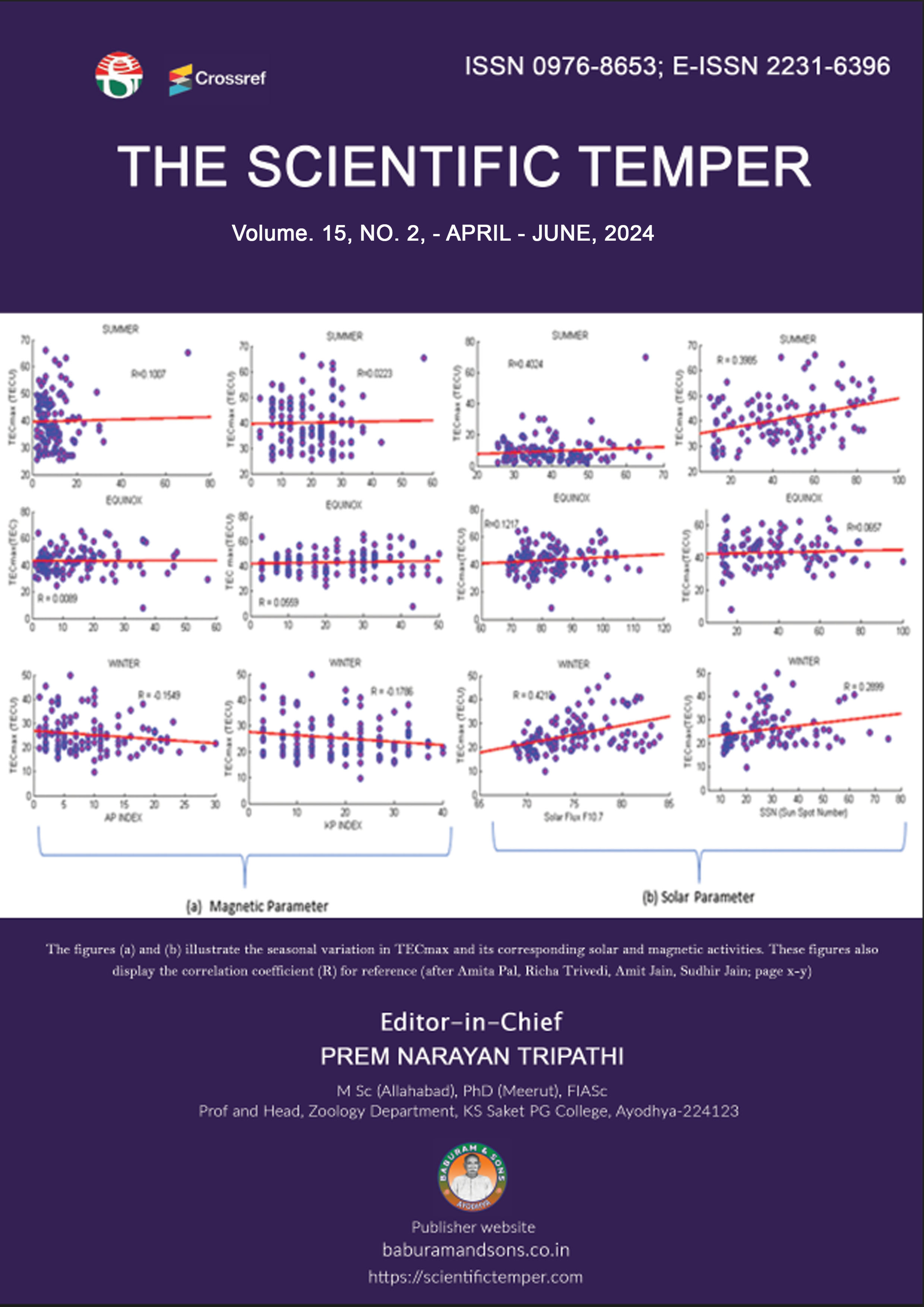Evaluation of white seeded sesame (Sesamum indicium L.) genotypes on growth and yield performance in Menit Goldya Woreda of West Omo Zone, SWE
Downloads
Published
DOI:
https://doi.org/10.58414/SCIENTIFICTEMPER.2024.15.2.46Keywords:
cropping seasons Genotypes (varieties), Location, sesame, yield, yield componentsDimensions Badge
Issue
Section
License
Copyright (c) 2024 The Scientific Temper

This work is licensed under a Creative Commons Attribution-NonCommercial-ShareAlike 4.0 International License.
Sesame is the second export crop next to coffee in annual export, indicating the highest 14% of the total world export of the crop. In Africa, Sudan is the major sesame producer, followed by Nigeria, Somalia, Uganda and Ethiopia. But lack of well-adapted varieties are one of the bottleneck production problems that account for low yield and small areas cropped to the nation. Thus it is essential to evaluate such genotypes, which have high yield potential and are suitable to local environmental conditions. Therefore, field experiments were conducted at west Omo zone during 2019/20 main cropping seasons at one location of West- the Omo zone, southwest Ethiopia. The location was Menit Goldiya districts of West Omo Zone, through evaluation and selection of high-yielding sesame varieties. The study comprised of five improved and one local sesame varieties laid out in RCBD with three replications at each location. The growth and yield data were collected and analyzed by using SAS Version 9.3 statistical software. The result of the study revealed that all of the parameters considered were significantly (p < 0.01) affected by varieties on both years. Accordingly, at Menit Goldiya for, all parameters in both years and the combined analysis over the years indicated that maximum plant height, number of primary branches per plant, number of capsules per plant, thousand seed weights in grams and seed yield were observed for the Humera-1 variety. Likewise, the shortest days to flowering, early maturing, the highest length of capsule bearing zone, the maximum number of capsules per plant, the highest number of seeds per capsule and the maximum seed yield (8.13 Qu/ha) were observed for the Humera-1 variety in 2019/2020 growing seasons. Based on the mean total seed yield of locations and different yield evaluation methods, a high-yielding variety was identified. Accordingly, the Humera-1 variety performed best on both years. Therefore, this variety can play a vital role in food self-sufficiency and food security of the south-western region and it should be widely distributed to farmers of the testing locations and similar areas of the region.Abstract
How to Cite
Downloads
Similar Articles
- Sohini Bhattacharyya, Ajay Kumar Harit, Manoj Singh, Urvashi Sharma, Chaitramayee Pradhan, Occurrence of Antibiotic Resistance in Lotic Ecosystems , The Scientific Temper: Vol. 13 No. 02 (2022): The Scientific Temper
- Kumari Sandhiya, Ashwani Pandey, Ruchi Sharma, Kaneez Fatima, Rukhsar Parveen, Naveen Gaurav, Assessment of Phytochemical and Antimicrobial Activity of Withania somnifera (Ashwagandha) , The Scientific Temper: Vol. 13 No. 02 (2022): The Scientific Temper
- Amresh Kumar Singh, Manjit Singh Chhetri, Pushyamitra Mishra, Toughness and Ductile Brittle Transition Temperature of Different Mineral Filler Reinforced TPOs Composites , The Scientific Temper: Vol. 13 No. 02 (2022): The Scientific Temper
- Brijesh Pathak, Effects of Uranium on Growth Performance in Vigna unguiculata (L.) , The Scientific Temper: Vol. 13 No. 02 (2022): The Scientific Temper
- Manu Narendra Dev Purohit, Deepika Yadav, Naresh Vyas, Population Studies on Snails , The Scientific Temper: Vol. 13 No. 02 (2022): The Scientific Temper
- Ritu Jain, Ritesh Tiwari, Shailendra Kumar, Ajay Kumar Shukla, Manish Kumar, Awadhesh Kumar Shukla, Description of Medicinal Herb, Perfume Ginger: Hedychium spicatum (Zingiberales: Zingiberaceae) , The Scientific Temper: Vol. 13 No. 02 (2022): The Scientific Temper
- Shalini Tiwari, To Explore the Salt Stress Responsive Long Non-coding RNA(s) Mechanism in Contrasting Rice (Oryza stiva L.) Genotypes , The Scientific Temper: Vol. 13 No. 02 (2022): The Scientific Temper
- Amarjeet Kumar, Navin Kumar, Hydrological Status and Primary Productivity in Rasalpura Pond in Saran District of Bihar , The Scientific Temper: Vol. 12 No. 1&2 (2021): The Scientific Temper
- Anurag Tripathi, Shri Prakash, Prem Narayan Tripathi, Impact of SARS-CoV-2 (COVID-19) on the Nervous System: A Critical Review , The Scientific Temper: Vol. 11 No. 1&2 (2020): The Scientific Temper
- Anupam Sinha, Rhizome Rot Disease of Ginger (Zingiber officinale Rosc.) and its Bio-control Strategy , The Scientific Temper: Vol. 11 No. 1&2 (2020): The Scientific Temper
You may also start an advanced similarity search for this article.



